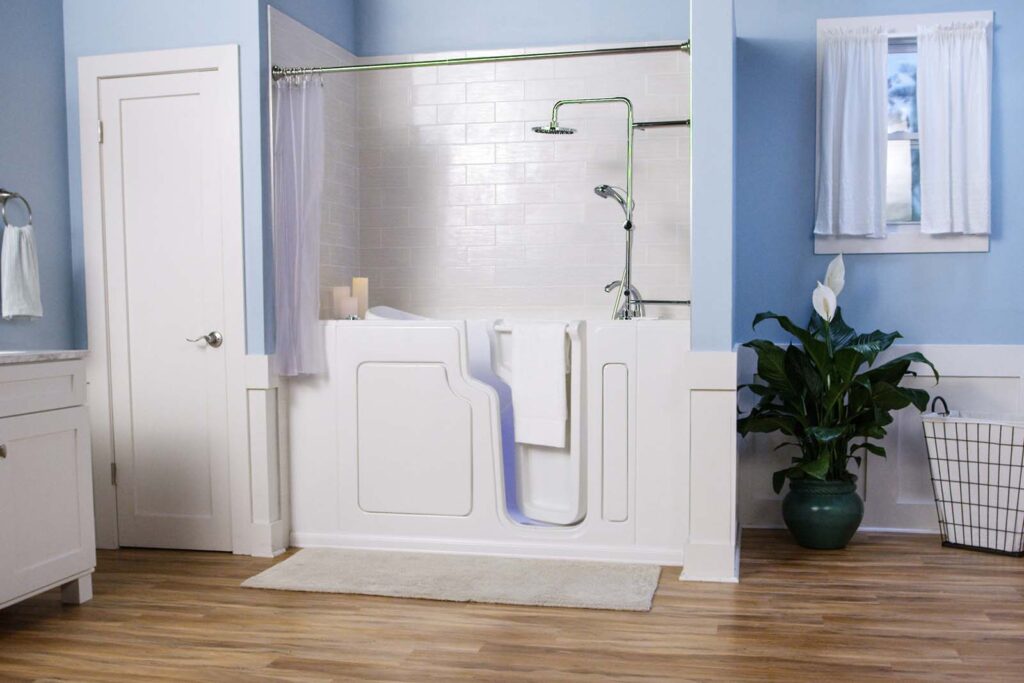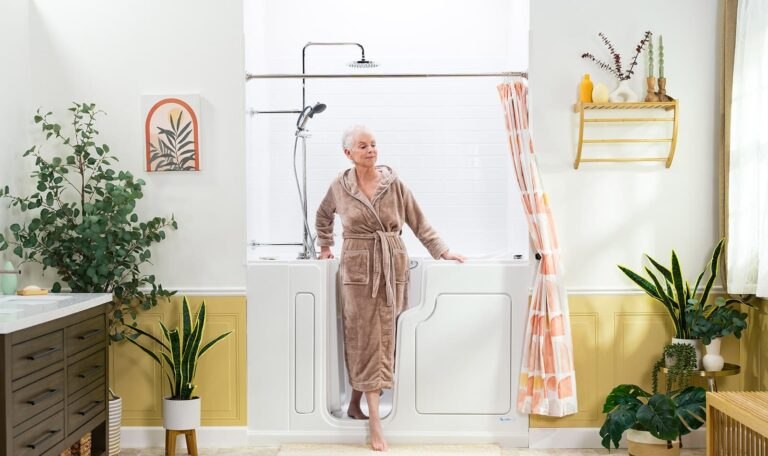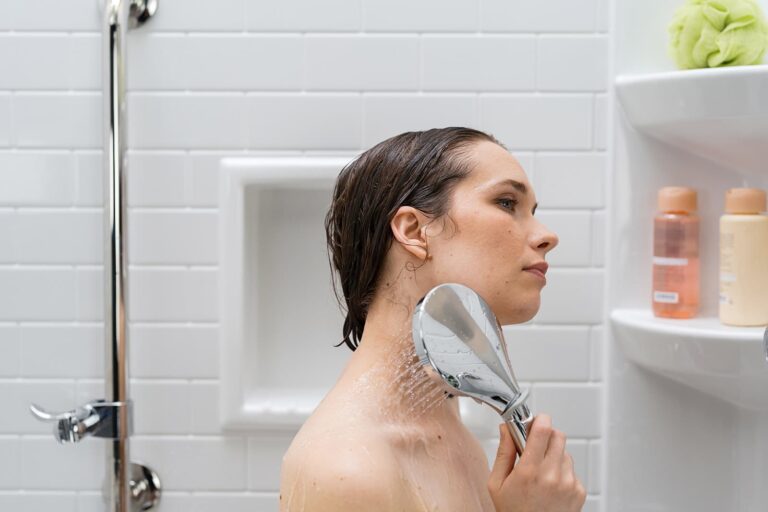How Can I Afford a Walk-In Tub? Smart Ways To Make Safe Bathing Affordable

For seniors or people with mobility limitations, a walk-in tub is a proven solution. The good news? Through financing programs, insurance benefits, grants and other cost-effective options, you can invest in long-term safety and comfort without straining your budget.
Why Waiting Can Cost More
Consumer prices climbed nearly 3 percent in 2025, hitting many household budgets. For people on fixed incomes, every increase makes it harder to stretch dollars. Though food, housing and healthcare cost more, bathroom safety is worth the investment.
The bathroom is one of the most accident-prone areas of the home, especially for seniors. A single fall can lead to expensive medical bills, long recovery times and lasting health consequences, making preventive safety measures a smart investment despite today’s financial pressures. Upgrades like grab bars, walk-in tubs and better lighting can reduce risks, provide peace of mind and ultimately save money.
Supports Aging in Place
In addition to being proactive, making a one-time investment in a walk-in tub can save you money as you age and your mobility needs change. A home health aide now costs about $80,000 per year, and assisted living can run more than $200 a day, according to Genworth.
Making home upgrades that facilitate aging in place offers a strong return on investment and enables you to remain in your forever home for as long as possible.
“Although not cheap, I believe the investment in Safe Step is truly worth the money because of the benefits I’ve experienced, particularly at my age of 83,” said Kenneth H., a satisfied Safe Step customer.

Understanding How To Afford a Walk-In Tub
A walk-in tub provides safe, reliable access to bathing without the hazards of a traditional tub. Even with the rising cost of living, Safe Step is committed to ensuring this home upgrade remains attainable.
The average cost for a Safe Step Walk-In Tub varies depending on the model you get and the features you choose. Our standard walk-in tub has a low step-in, watertight door seal and built-in seat. A premium tub also includes a bidet and therapeutic features, like aromatherapy and color therapy. Walk-in tub installation is included, though added flooring reinforcement or plumbing adjustments may incur extra charges.
A Safe Step design specialist will partner with you to find a solution that fits your budget. Fortunately, there are at least seven ways to make the cost of your walk-in tub accessible.
1. Insurance, Medicare and Medicaid Coverage
Medicaid is a state-run program offering free or low-cost healthcare for those who qualify. Through its Home and Community-Based Services waivers, states can offer long-term care for low-income seniors who wish to remain at home rather than move to an institution, covering the cost of a walk-in tub. A Safe Step design consultant can guide you through your state’s specific guidelines.
On the other hand, original Medicare only covers the cost of equipment to treat a medical condition. It will pay for wheelchairs and walkers, but typically considers a walk-in tub a comfort feature rather than a medical necessity. More robust Medicare Advantage programs, which are regulated by Medicare but run by private insurance companies, may cover the cost of a walk-in tub. Connect with your insurance provider to determine if coverage is available.
2. Grants and Assistance Programs for Seniors
There are a number of grants and assistance programs to help facilitate aging in place, depending on prior military service, income level and location.
Veterans Affairs Grants
The VA provides financial assistance for walk-in shower purchases, but they no longer cover walk-in tubs. Veterans may be eligible to receive funding for a walk-in shower through grants such as the Specially Adapted Housing (SAH) grant, the Special Home Adaptation (SHA) grant and the Home Improvements and Structural Alterations (HISA) grant.
While most grants cover veterans with a qualifying service-connected injury, smaller grants may be available to veterans with other disabilities, including seniors.
Safe Step is proud to offer special pricing (up to $500 off) for veterans who need financial assistance. Ask your Safe Step representative about our military discount to determine your eligibility.

U.S. Department of Agriculture Grants
The USDA offers home repair assistance for low-income seniors in rural areas, including grants of up to $10,000 to remove health and safety hazards and loans of up to $40,000. These seniors can use this assistance to pay for a walk-in tub.
Area Agency on Aging
Located across the country, Area Agency on Aging branches advocate for seniors. Your local agency may be able to point you to assistance and grants available in your hometown.
3. Financing and Payment Plans
Financing from third-party lenders and payment plans may be available for a walk-in tub. Safe Step offers various financing plans to make your purchase more affordable. You can discuss these options with your design specialist.
4. Potential Tax Deductions
A new walk-in tub may be tax-deductible if it’s considered medically necessary. The IRS allows deductions for special equipment installed in a home. To qualify, the tub should be doctor-recommended and tied to a health condition, disability or mobility need. Consult your physician or tax professional to confirm eligibility.

5. Home Equity Options
While home equity is creeping down, the average homeowner with a mortgage still has $307,000 of equity in their home. Depending on your age, you may have even more. Nearly 60% of adults between the ages of 65 and 79 do not have a mortgage. If you’re considering tapping into the equity of your home, consult your financial advisor to make sure it’s the best solution.
Home Equity Line of Credit or Loan
A home equity line of credit (HELOC) works like a credit card. It has a variable interest rate, and you can borrow as needed and make interest-only or low payments. With a home equity loan, you borrow a lump sum for your home upgrade with a fixed monthly payment.
Reverse Mortgage
A reverse mortgage can provide supplemental income in retirement. Instead of making monthly payments to a lender like a traditional mortgage, the lender pays you, using the equity you’ve built in your home. You are free to use these funds for living expenses, medical bills, home improvements or anything else.
6. Retirement Savings and Investments
Leverage a portion of your 401K or IRA to purchase a walk-in tub. You can begin accessing funds from your 401K at the age of 59.5 years old without penalty. If you leave or lose your job earlier, you can access it as early as age 55 without penalty. It’s crucial to weigh your finances and discuss these options with a trusted financial advisor.
7. Discounts and Rebates
During your sales consultation, ask your walk-in tub provider if they offer any discounts or rebates to offset the cost of your investment.
Safe Step provides a Helping Hands Rebate of $750 off per person for your walk-in tub or shower. If you suffer from arthritis, nerve problems, diabetes, sciatica or a variety of other health issues, you may qualify for up to a $750 rebate or $1,500 per household. We also offer senior discounts, veteran discounts and more.

Making an Affordable Walk-In Tub a Reality with Safe Step
Safe Step has helped countless families experience safer bathing solutions. Our design specialists can discuss your options to make your walk-in tub affordable. Get started to connect with the Safe Step team to reclaim your independence and enhance your daily routine.


